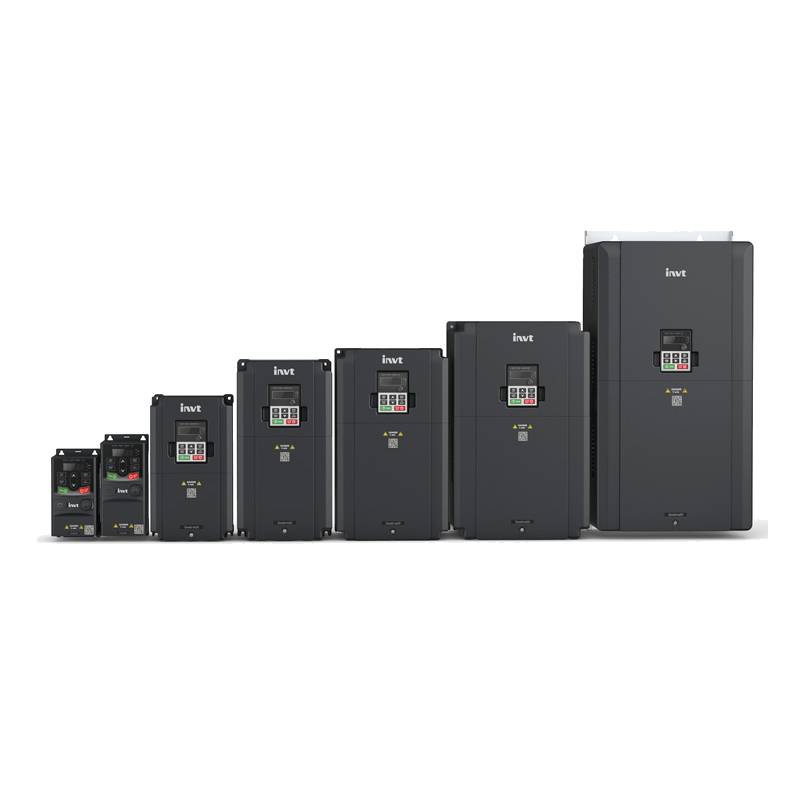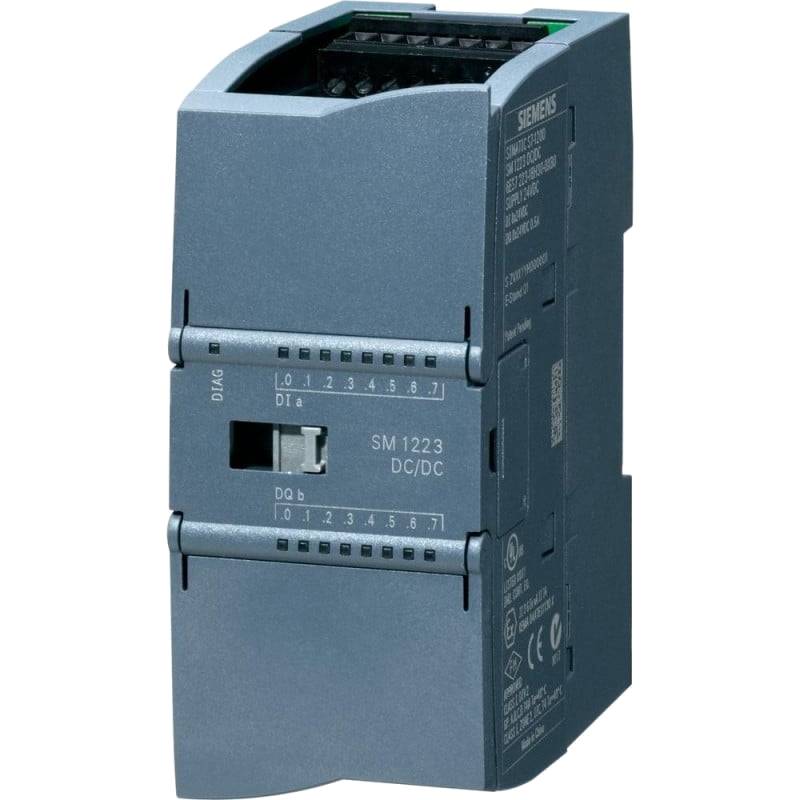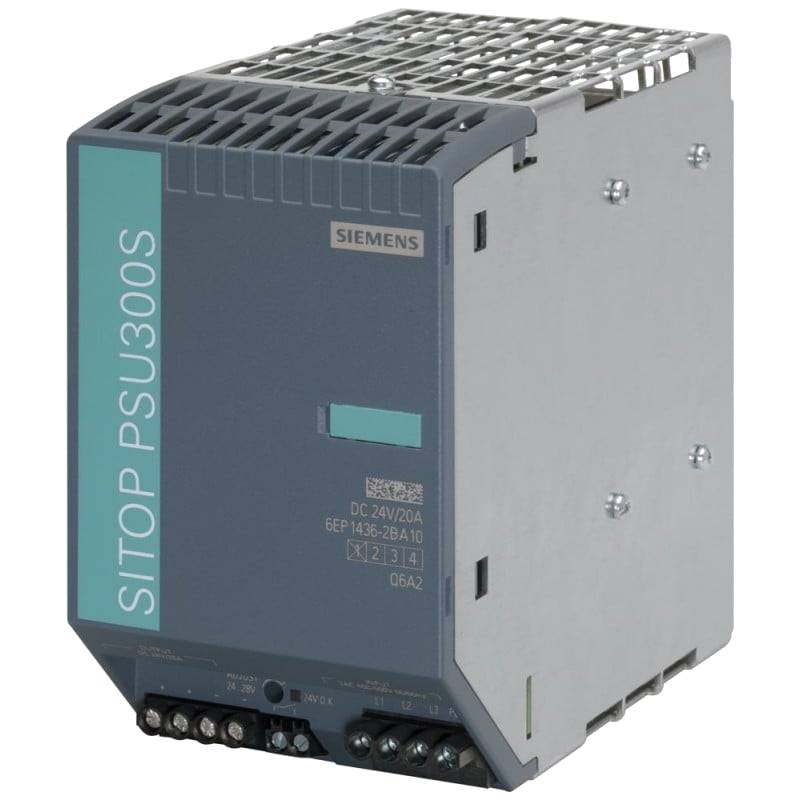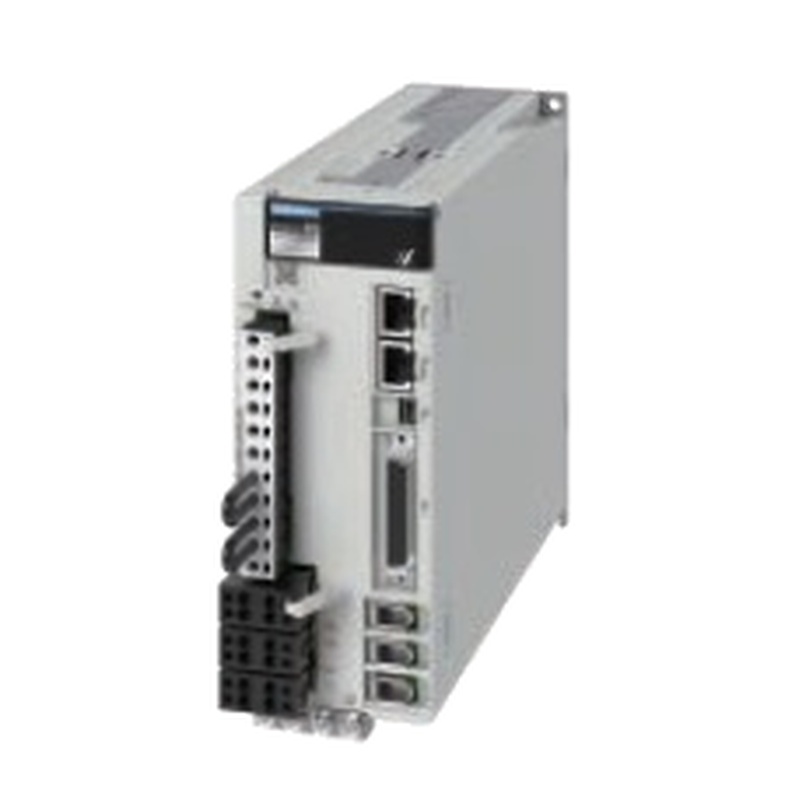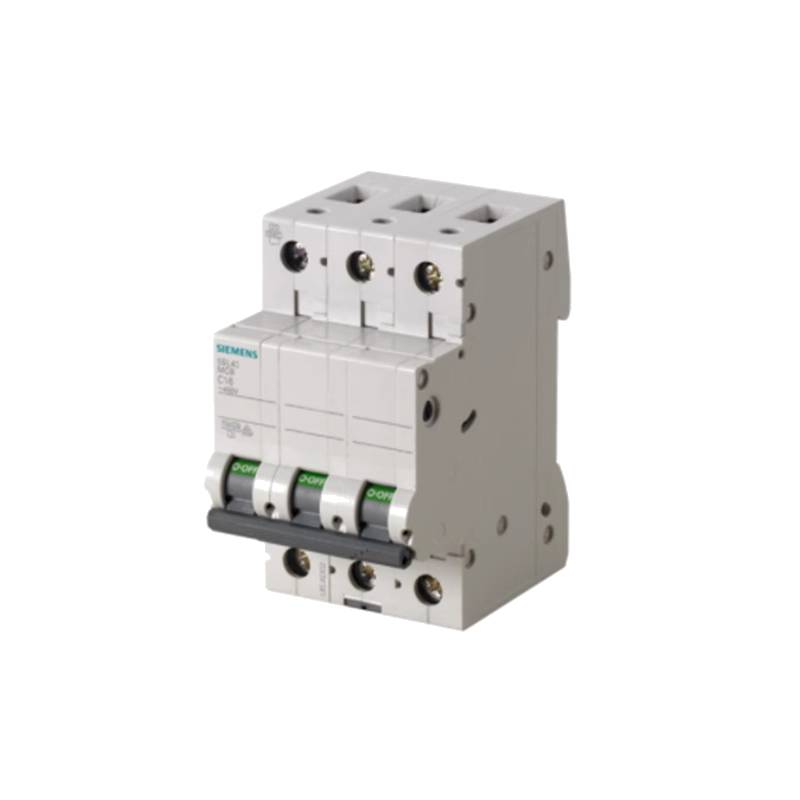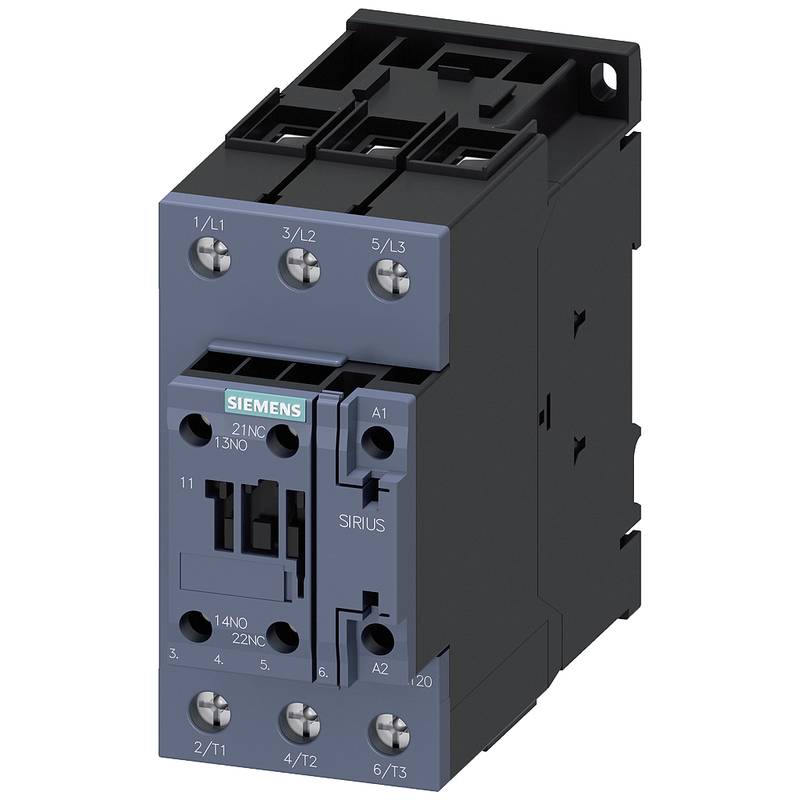
The Siemens 5SN6240-7CN Miniature Circuit Breaker (MCB) is a robust, two-pole, 40-ampere protection device engineered for reliable circuit interruption in demanding industrial environments. This MCB offers superior overcurrent and short-circuit protection, ensuring the safety and integrity of electrical installations. Its core advantages lie in its high breaking capacity, precise tripping characteristics, and durable construction, making it a cornerstone for safeguarding sensitive equipment and personnel. Key technical parameters include its 2-pole configuration, a rated current of 40A, and a breaking capacity that meets stringent international standards, safeguarding against electrical faults with exceptional efficiency.
Product Specifications
| Feature | Specification |
| :------------------ | :-------------------------------------------- |
| Product Type | Miniature Circuit Breaker (MCB) |
| Pole Configuration | 2-Pole |
| Rated Current | 40A |
| Rated Voltage | Typically 230/400V AC (confirm specific variant) |
| Breaking Capacity | High (refer to specific IEC/UL standards) |
| Tripping Curve | Type C (standard for inductive loads) |
| Frequency | 50/60 Hz |
| Mounting | DIN rail |
| Protection Degree | IP20 |
| Ambient Temperature | -25°C to +45°C |
Core Features & Market Positioning
The Siemens 5SN6240-7CN distinguishes itself through its advanced thermal-magnetic tripping mechanism, offering precise and reliable protection against overload and short circuits. This adherence to Type C tripping curves ensures it effectively handles inrush currents common in industrial machinery, preventing nuisance tripping while maintaining crucial safety margins. Its robust construction, often featuring high-quality thermoplastics and corrosion-resistant internal components, positions it as a durable solution for environments subjected to vibration, dust, and fluctuating temperatures. Compared to lower-tier breakers, the Siemens 5SN6240-7CN provides enhanced safety certifications and a longer operational lifespan, crucial for minimizing downtime and maintenance costs in critical industrial applications.
Key Application Scenarios
This 2-pole, 40A MCB is ideally suited for protecting power circuits in a variety of industrial settings. It is commonly employed in control panels for machinery, distribution boards for manufacturing plants, and protection systems for auxiliary equipment. Its application extends to safeguarding motors, transformers, and lighting circuits where reliable overcurrent protection is paramount. Users frequently search for circuit breakers capable of handling inductive loads, making the Type C characteristic of the 5SN6240-7CN particularly relevant for applications involving motor control centers and other equipment with significant startup currents.
Practical System Integration Guidance
Integrating the Siemens 5SN6240-7CN into existing or new electrical systems is straightforward, primarily utilizing standard 35mm DIN rail mounting. Ensure the supply and load terminals are correctly identified before wiring. Connect incoming power to the line terminals and outgoing protected circuits to the load terminals. For a 2-pole breaker, both live conductors must be connected to the device to ensure complete isolation during fault conditions. It is critical to use conductors of appropriate size and insulation rating for the 40A current. Proper torque should be applied to the screw terminals to ensure a secure connection and prevent overheating.
Operation and Risk Mitigation
Operating the Siemens 5SN6240-7CN involves simple manual operation of the toggle lever for connection and disconnection. In the event of an overcurrent or short circuit, the breaker will automatically trip, moving the lever to the "off" position. To reset, the lever must first be moved fully to the "off" position and then back to the "on" position. Common troubleshooting involves identifying the cause of the trip, such as an overloaded circuit, a short circuit in downstream wiring or connected equipment, or a faulty appliance. Avoiding repeated manual resets without addressing the root cause is crucial to prevent damage to the breaker and the protected circuit.
Scalability & Long-Term Value
The 5SN6240-7CN offers significant long-term value through its compatibility with a wide range of Siemens industrial components and modular accessory offerings. This allows for future expansion or integration into more sophisticated control systems. While this specific model is a standalone protection device, its inclusion within a comprehensive Siemens electrical infrastructure facilitates upgrades to smart metering, remote monitoring, or advanced automation solutions by maintaining a consistent interface and quality standard. Its robust design ensures a long service life, reducing the total cost of ownership for industrial facilities.
Frequently Asked Questions (FAQs)
What is the breaking capacity of the Siemens 5SN6240-7CN?
The breaking capacity is a critical safety feature. It defines the maximum fault current the breaker can safely interrupt.
High breaking capacity ensures the device can handle severe short circuits without damage.
Consult the product's detailed datasheet for the exact IEC or UL rated breaking capacity, typically denoted in kA.
Can this 40A breaker be used for residential applications?
While technically capable, it's designed for industrial use. Residential applications often use different series.
Its 2-pole configuration is less common for standard single-phase residential circuits.
For safety and code compliance, always use breakers specifically rated and approved for residential installations.
What does "Type C" tripping curve mean for this MCB?
Type C indicates its response to overcurrents. It's designed for inductive loads.
This curve allows for higher inrush currents without tripping, common in motors.
It trips between 5 to 10 times the rated current, balancing protection and nuisance tripping.
How do I wire the 2-pole Siemens 5SN6240-7CN?
Connect the incoming live conductors to the designated line terminals.
Connect the outgoing protected circuit conductors to the load terminals.
Ensure both poles are connected to ensure complete circuit isolation when tripped.
What is the main advantage of a 2-pole breaker?
A 2-pole breaker disconnects both live conductors simultaneously.
This provides a higher level of safety, especially in systems with two live wires.
It ensures full isolation from the power source, preventing hazardous voltage on the protected circuit.
Is the Siemens 5SN6240-7CN compatible with other brands' DIN rail systems?
Siemens MCBs are designed for standard 35mm DIN rails, usually ensuring compatibility.
However, slight variations can exist; always test fit if mixing brands.
For critical safety applications, using components from the same manufacturer is recommended.
What is the IP rating and what does it mean for this MCB?
The IP20 rating means it's protected against solid objects over 12.5mm.
It also offers protection against accidental contact with live parts.
However, it does not provide protection against water ingress, so it's for dry indoor environments.
How do I reset the breaker after it trips?
First, ensure the fault condition has been cleared.
Manually move the breaker's lever to the full "off" position.
Then, push the lever up to the "on" position to restore power.
What are the typical failure modes for this type of MCB?
Overheating due to loose connections or undersized conductors is a risk.
Mechanical wear on the internal tripping mechanism can occur over time.
Exposure to extreme environmental conditions can also degrade performance.
Can this breaker be used for DC circuits?
This specific model (5SN6240-7CN) is generally designed for AC circuits.
Using AC breakers on DC circuits can be hazardous and ineffective.
Always select breakers explicitly rated for DC applications if needed for DC systems.
















